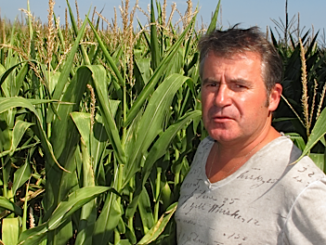ARC2020, along with 23 additional organisations, have today issued a letter for EU Commissioner for Health and Consumers – Tonio Borg. The letter, written by the UK-based networks Compassion in World Farming, the Soil Association and Sustain, is calling on the Commissioner to urgently to reduce use of antibiotics in livestock production.
You can find a PDF version (including footnotes) here: Open letter to Commission – May 2013
Dear Commissioner Borg
Need to reduce use of antibiotics in livestock production
We welcome the European Commission’s 12-point action plan of 15 November 2011 for controlling antimicrobial resistance. While the proposals cover the main areas in general terms, we are concerned that detailed proposals to address this serious issue have yet to be published. We feel it is essential that an EU-wide strategy is developed which will be effective in reducing the overuse of antibiotics in agriculture to the minimum required for maintaining animal welfare. We hope that the Commission will include measures with this aim in mind in the forthcoming revision of EU legislation on veterinary medicines and medicated feeding stuffs.
The European Union provided global leadership by phasing out the use of antibiotic growth promoters between 1997 and 2006. A key goal of this action was to reduce the levels of resistant enterococci in farm animals and in humans, and data collected since then shows that this has been achieved. This demonstrates that the rise of antibiotic resistance can be slowed, or even reversed, if firm regulatory action is taken in time.
However, it is widely recognised that many livestock producers responded to the growth-promoter ban by increasing their use of other antibiotics under veterinary prescription. Some of these antibiotics, frequently used for ‘prophylaxis’ (disease prevention) at sub-therapeutic levels in healthy animals, are even more important in human medicine than some of the banned growth promoters, particularly for the treatment of Salmonella, Campylobacter and E. coli infections, which are often of farm-animal origin. As the Commission has previously made clear, the inappropriate use of antibiotics in human medicine also remains a serious problem, which requires further action. However, this must not detract from the clear evidence that the excessive administration of antibiotics to farm animals is increasingly contributing to treatment problems in human medicine, while also having the potential to create a serious treatment crisis in livestock production as well.
The European Food Safety Authority has said that ‘Resistant Salmonella and Campylobacter involved in human disease are mostly spread through foods’. Regarding E. coli, EFSA has said that ‘Some categories of food may often be contaminated with E. coli, including resistant isolates, and these bacteria reside long enough in the intestines of humans to transfer resistance genes to the residential flora. It is therefore highly probable that food is a vehicle for spread of resistance genes between different ecosystems’.
The WHO similarly states that ‘Resistance in the food-borne zoonotic bacteria Salmonella and Campylobacter is clearly linked to antibiotic use in food animals, and food-borne diseases caused by such resistant bacteria are well documented in people’ and ‘Resistant E. coli can spread from animals to people through the food chain’.
Furthermore, in many European countries over the past decade there have been large increases in use of the critically important antibiotics, the modern cephalosporins and the fluoroquinolones, which have broad-spectrum activity. This has led to the emergence of livestock-associated strains of MRSA, like ST398, and of extended-spectrum beta-lactamase (ESBL) E. coli in farm animals. Our analysis, detailed in the enclosed briefing paper, concludes that it is now beyond reasonable doubt that the current use of antimicrobials in farm animals is contributing to levels of antimicrobial resistance in life-threatening infections in the human population, making prompt and successful treatment more problematic.
As a result of the strength of the evidence, the European Medicines Agency (EMA), EFSA and the WHO have all said that there is a need to reduce the levels of resistance being transmitted from livestock to humans, and highlighted reduced antibiotic use as probably the most effective method available.
We warmly welcome recent actions that the EU has taken for restricting some uses of critically important antibiotics, particularly the modern cephalosporins, but believe that much more remains to be done.
In particular, we ask you to include the following as part of an overall strategy for the reduction in the use of antibiotics in farm animals:
1. A legally binding timetable to phase out routine prophylactic use of antibiotics.
We welcome the EMA’s 2011 clarification that, for products authorised through the centralized procedure, prophylactic use is not permitted unless the presence of the disease has been established. We are calling on you to ensure that this is extended to all antibiotic products, including those licensed through the decentralised and mutual-recognition procedures, and given legal force by inclusion in revised veterinary-medicines and medicated-feed legislation. At present, it is clear that many within the industry continue to use antibiotics for routine prophylaxis, in the absence of disease, and to believe that this is acceptable practice.
2. The ban on the use of modern cephalosporins in poultry must be fully implemented, and a ban should also be introduced on their use in pigs and for dry-cow therapy in cattle.
We welcome the Commission’s Implementing Decision of 13 January 2012 that Member States must add a statement to the Summary of Product Characteristics (SPCs) for modern cephalosporins, saying that the product must not be used in poultry. It is important that the Commission ensures that this is acted upon and then monitored throughout the EU. Danish and Dutch pig producers have already introduced voluntary bans on the use of modern cephalosporins. Very recently published research found that the occurrence of ESBL E. coli in Danish pigs at slaughter fell from 11.8% in 2010 to 3.6% in 2011 after the voluntary ban was introduced in July 2010. The decline in resistance for pigs tested on farms was even larger, from 11% in 2010 to 0% in 2011. Dutch dairy farmers have also introduced a voluntary ban on the use of modern cephalosporins for dry-cow therapy. According to the Dutch Chief Veterinary Officer, these voluntary bans contributed to a 92% reduction in the Dutch farm use of these antibiotics between 2009 and 2012.
3. Modern cephalosporins should no longer be permitted to be used off-label.
The risk of ESBL resistance and MRSA transferring from farm animals to humans is too great to permit use of these antibiotics in animals which is not fully regulated.
4. A ban on the use of fluoroquinolones in poultry.
Fluoroquinolones are critically important antibiotics in human medicine because of their importance for treating infections such as Campylobacter, Salmonella and E. coli. Poultry are recognised as a key source of these infections in humans, and in the case of Campylobacter, by far the most important source. The United States banned the use of these antibiotics in poultry for this reason.
5. New legislation aimed at improving animal health and welfare and ensuring that farm animals are kept in less-intensive conditions with, wherever possible, access to the outdoors.
It is essential that a farm-animal health and welfare strategy should be recognised as a key tool in helping to address the rise of antibiotic resistance. Improving animal health through increased animal welfare, better system design and the selection of breeds that are less susceptible to disease can dramatically reduce the need for antibiotics.
6. Improved surveillance of antibiotic use and antibiotic-resistant bacteria in farm animals
We recognise that the Commission has already taken some imporelation to antibiotic-sales data and to the surveillance of antibiotic resistance. However, it is crucial that sales data be provided by antibiotic class in each animal species, without which the data is of little value for monitoring the relationship between antibiotic use and resistance levels. It is also vital that the Commission uses its powers to ensure that all Member States routinely monitor levels of antibiotic resistance in farm animals and on retail meat Staphylococcus aureus.
We strongly support the steps the Commission and other EU institutions have already taken in relation to antibiotic resistance of farm-animal origin, and hope that these are just the first steps in the development of a much more responsible and sustainable.
Yours sincerely,
Compassion in World Farming, Soil Association, Sustain: The alliance for better food and farming, ARC2020, The UK Sepsis Trust, EPHA (European Public Health Alliance), Faculty of Public Health (FPH), Haemolytic Uraemic Syndrome Help (HUSH), The UK E.coli Support Group, Institute of Primary Care & Public Health, Cardiff University School of Medicine, European Environmental Bureau, Friends of the Earth Europe, Euro Coop, Food and Water Europe, Intimate With Nature Society (IWNS),
International Coalition to Protect the Polish Countryside, The Sustainable Food Trust, Farms not Factories, Albert Schweitzer Stiftung, ANDA (Asociación Nacional para la los Animales), One Kind, Defensa de Ann de Greef, GAIA (Global Action in the Interest of Animals).





